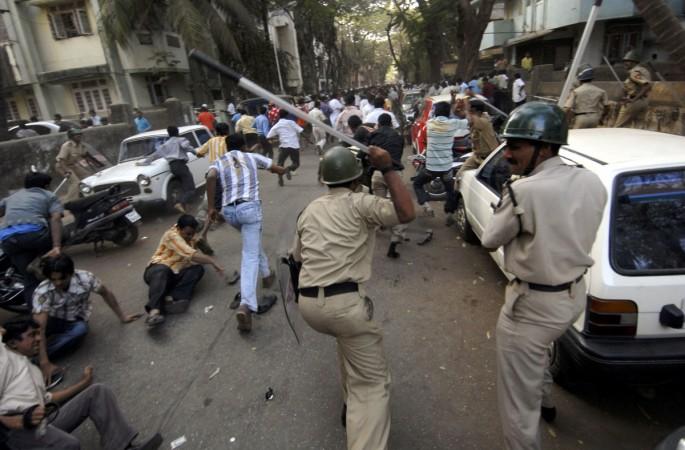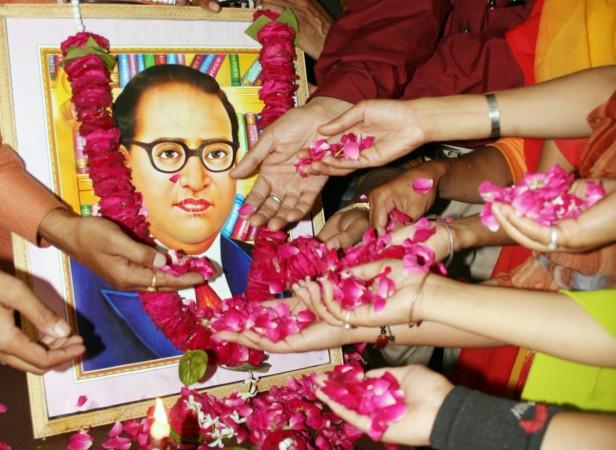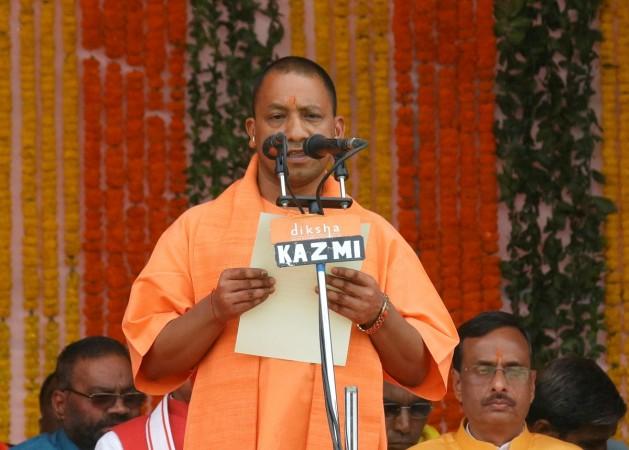
The Bharatiya Janata Party (BJP), perceived as a party of the upper castes, did a commendable job in winning Uttar Pradesh this March but what has been happening in Saharanpur currently is bound to put the top brass of a party which aims to give a homogenising touch to the country in a spot.
The Yogi Adityanath government is facing its first big test in Saharanpur where the Dalits have refused to tolerate the social hierarchy and taken on the Rajputs who stopped them from installing a statue of BR Ambedkar on the premises of a temple.
The Yogi Adityanath govt has a tough test ahead
The Dalits later raised objections to an event of the Rajputs who were hell bent to commemorate the birth anniversary of Maharana Pratap. In the clashes that followed, one Dalit boy was shot dead and many were badly injured. The police arrested 11 young Rajput men on charges of attacking the Dalits but their relatives threatened that the BJP could have to pay for it in the near future.
For Adityanath, it's a classic case of being caught between the devil and the sea for the Dalits played a big role in the BJP's consecutive big victories in UP in 2014 and 2017.
Given the saffron party's original identity of one of the upper castes, trying to assert its more inclusive face would invariably bring the BJP on the collision course with its traditional vote-bank. Specially, with the Rajput Adityanath leading the government, such a stance of 'betraying' his own community is very much likely to see a retaliation the next time the state goes to the polls.

But the BJP needs to understand that the story of India's social democracy doesn't abide by the rules of its electoral democracy.
The Dalits have remained one of the most suppressed sections in the country and even for many of those who have shown the mettle in scaling the social stairs, the story has not been rosy (read Rohit Vemula). But today, outfits like the Bhim Army and their leader like Chandrasekhar Azad (Ravan) have decided to rise to the occasion. Is this a kind of unprecedented social revolution?
Enough is enough! The Dalits have now decided to hit back
Two factors have worked towards the Dalits' eventual turning around, as they have done in Saharanpur. First is the continuous attack on their brethren across the country, especially by the gau-rakshaks. The cow vigilante groups have cared little even for the appeal of Prime Minister Narendra Modi and have mercilessly targeted Dalits along with Muslims for carrying cattle or removing cow carcasses.
The continuous telecast of the scenes of Dalits getting beaten up and killed by the all-penetrating media today is helping a counter voice to grow among the Dalits. Even they are getting financial aids, as reports from Saharanpur have suggested. After years of subjugation, the forces of democracy have crept into the Dalits' ranks and they are now preparing for a counterpunch.
In fact, because they have also embraced the BJP because of Modi's positive leadership, the Dalits also have a feeling of belongingness to the day's government, something which has not happened in the state's elute-controlled politics often. The Dalits got their first big taste of political empowerment under Mayawati and now the process stands irreversible. The Dalits are not going to surrender without a fight even as the saffron fanatics think the Modi era has given them a free licence to kill.
The Dalits have also understood that the 'political' has failed them
The second factor has been the failure of the political. The continuous decimation of their messiah Mayawati, the former chief minister and supremo of the Bahujan Samaj Party, has sent across the message to the Dalits that the political has failed them after a point. Even Mayawati was not the first leader to have failed them.
Be it Dadasaheb Gaikwad, a close aide of Ambedkar; the Republican Party of India; Dalit Panthers or Prakash Ambedkar, Ambedkar's grandson – the political quest to make a distinct space for the Dalits have not been successful – thanks to the strategy of cooptation by the ruling Congress in the past and the parties' inherent disunity.
The Dalits also never had ideologues like the communists and the programme for their emancipation was eventually reduced to the iconisation of Ambedkar and his appropriation by the political which was ultimately expressed in the effort to win the state power.

In a nutshell, BR Ambedkar's legacy was imbibed conveniently with him being revered as a monolithic idol. The leader's radical thinking was kept obscured and he was turned into a non-threatening entity, just like several other iconic personalities from the past have been by the opportunistic leaders today.
Street politics will suit the Dalits who have been let down by instutional politics
The Dalits, hence have been let down by both the politicians who have tried to showcase themselves as their liberators as well as the pseudo-intellectuals. With the institutional politics gradually crumbling in India and street justice is becoming more a recognised rule in our democracy, the Dalits have used it to their advantages. The ball is now in the court of the BJP and its chief minister Yogi Adityanath to find a way out to blend the two vote-banks for its own sake of survival.
If Adityanath fails to win the Dalits' hearts back and prove himself to be just another politician who only used up their votes, the 'empowered' Dalits will not let it go peacefully. The Bheem Army's emergence has showed that the Dalits, just like Muslims, have also begun to organise and mobilise themselves on lines of the Ranvir Sena or the Shiv Sena. It is a big sign of India getting more democratised and the rise of the Dalits as yet another face of the world's largest democracy.
The BJP might have buried its political opponents but certainly not the social adversaries.









